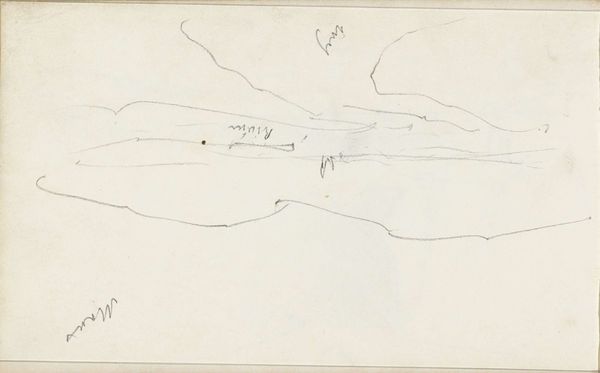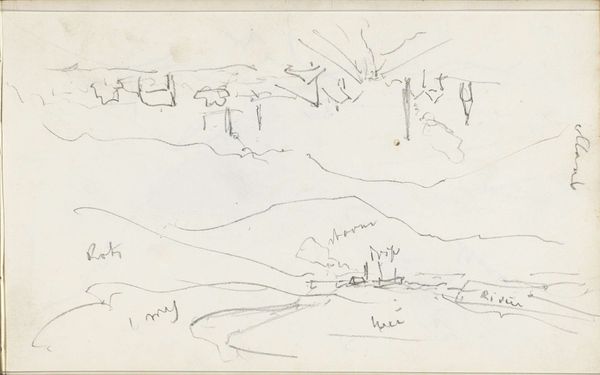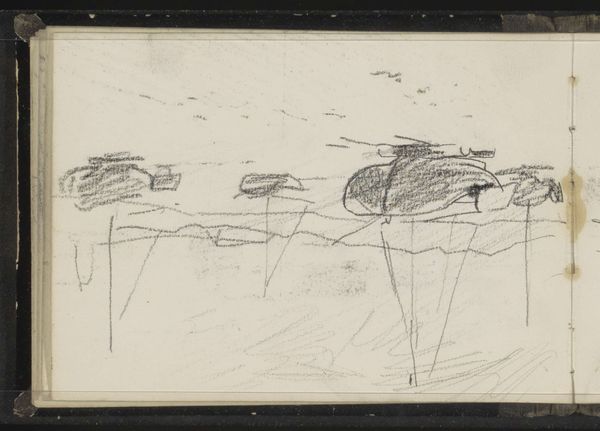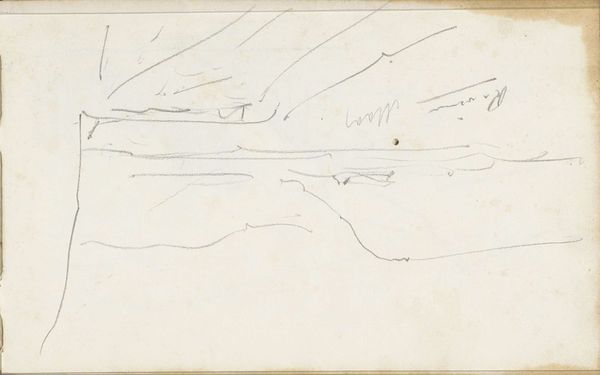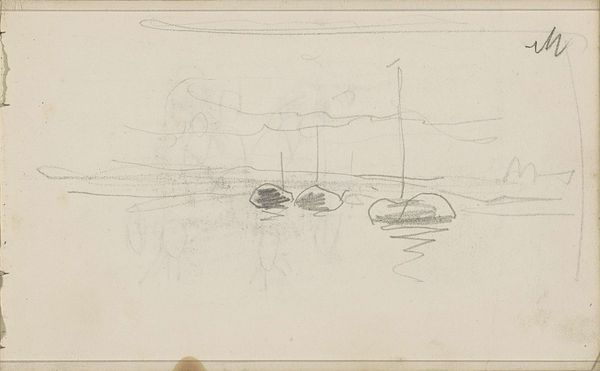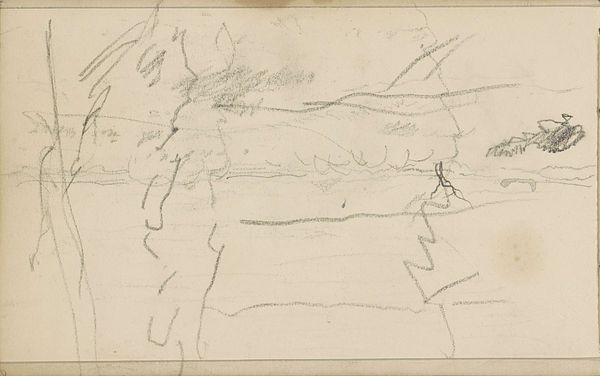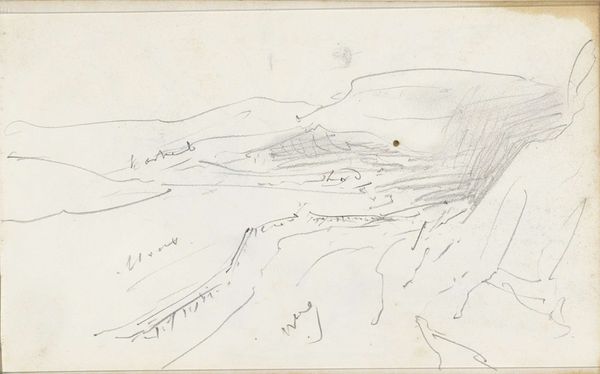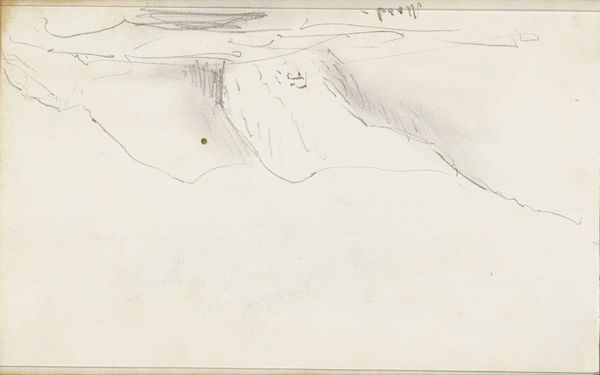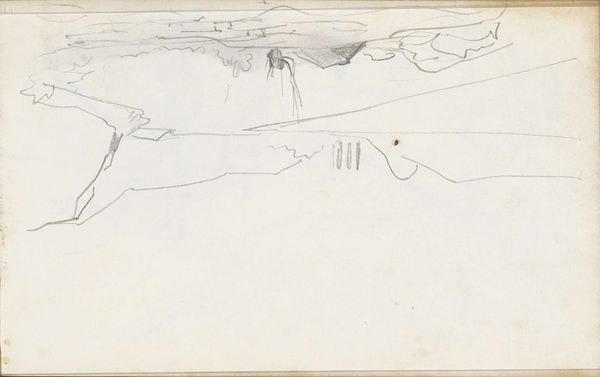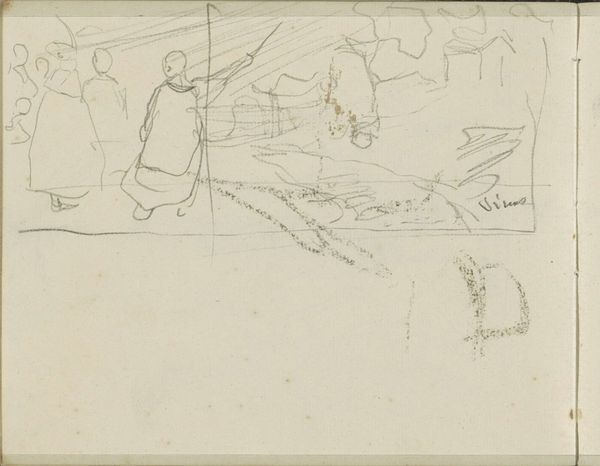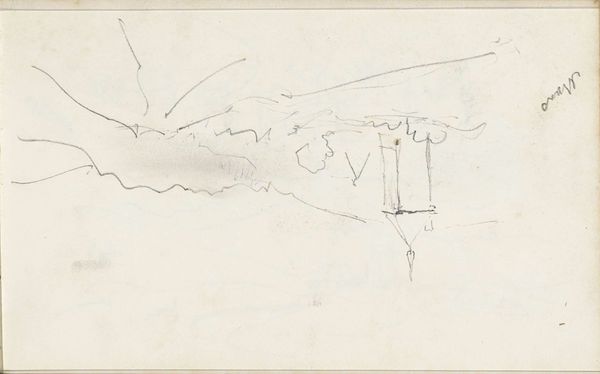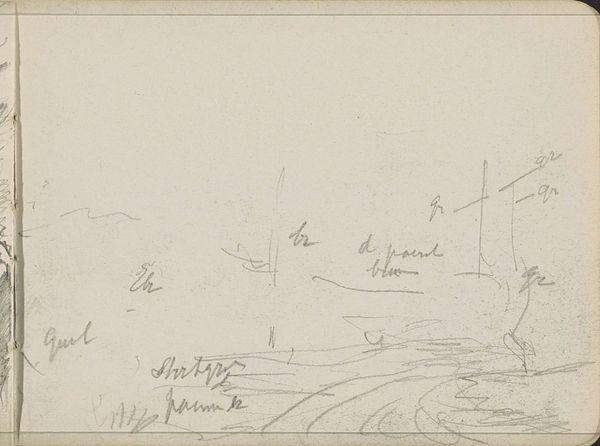
drawing, paper, pencil
#
drawing
#
landscape
#
paper
#
road
#
pencil
#
realism
Copyright: Rijks Museum: Open Domain
Curator: Well, this unassuming drawing is Johannes Tavenraat’s "Heuvellandschap met huizen en een kerk aan een weg," created around 1840. It’s a pencil sketch on paper, currently held at the Rijksmuseum. Editor: It feels so ephemeral! Like a fleeting thought, barely captured. You can almost see the artist hesitating over each stroke, unsure of what to emphasize. There's such deliberate sparsity. Curator: It's interesting you note the sparsity. Consider the role of sketches in artistic training at that time. This might not be intended as a finished product, but as a study, a way for Tavenraat to work out composition, to experiment with light and form within a safe, low-cost medium. The accessibility of pencil and paper surely played a role. Editor: Precisely. The lack of refinement directs our attention straight to the landscape, forcing us to ask questions about its socio-political context. The presence of a church suggests established power structures, while the road implies a potential for movement and trade. How would this scene have been viewed by people of the time? Who benefited from it, and who might have been excluded? Curator: I think we also have to consider Tavenraat's technical approach here. Note the variation in the weight of the pencil lines and how he manages to give a sense of depth and atmosphere. We’re seeing the land itself recorded in the graphite, shaped into what the eye sees by the skilled application of his hand, and fixed onto the page in front of us. The medium of the day records the materials that made up the scene in turn. Editor: Good point, that tension is fascinating. It captures both the grandeur of the land and the ordinary. The road cuts through, but so do the churches spires. What's implied about the way the natural landscape can be co-opted? The power and purpose held in that. Curator: This piece exemplifies a shift from elaborate, idealized landscape painting towards a more immediate and unvarnished view of the world, perhaps connected to burgeoning industrialisation? Editor: So much to think about with so few lines. It prompts a deeper investigation of societal elements within art history. Curator: Indeed. For me, the beauty is how such simple materials become a testament to both a specific time and Tavenraat's skilled and careful craftsmanship.
Comments
No comments
Be the first to comment and join the conversation on the ultimate creative platform.
